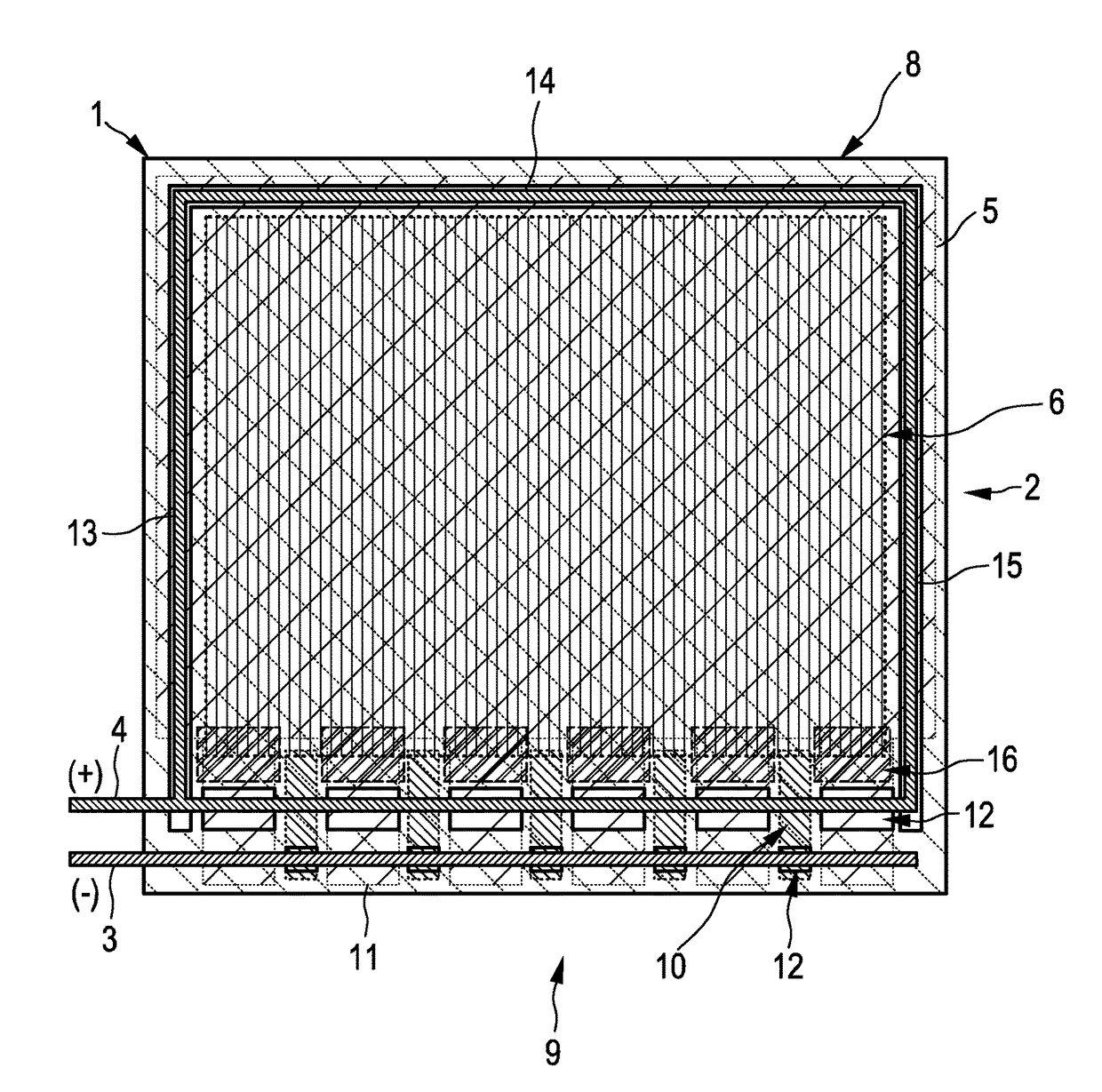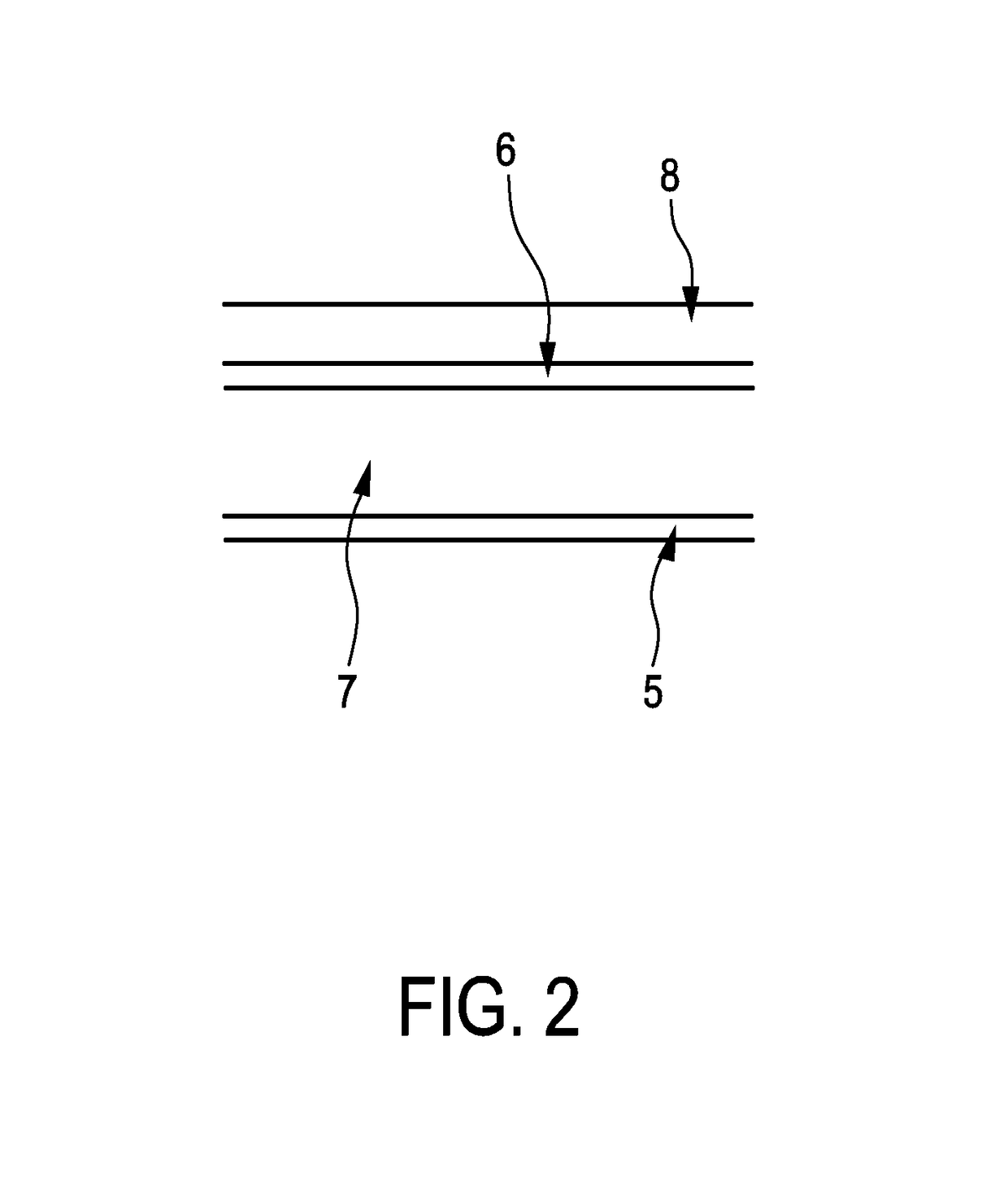Light-emitting device with alternating arrangement of anode pads and cathode pads
a light-emitting device and cathode pad technology, applied in the direction of semiconductor devices, organic semiconductor devices, electrical devices, etc., can solve the problems of reducing assembly efforts for light-emitting devices having an improved degree of homogeneity of light emission, and achieve the effect of reducing assembly efforts, improving the degree of homogeneity of light emission, and reducing assembly efforts
- Summary
- Abstract
- Description
- Claims
- Application Information
AI Technical Summary
Benefits of technology
Problems solved by technology
Method used
Image
Examples
Embodiment Construction
[0027]FIG. 1 shows schematically and exemplarily an embodiment of a light-emitting device being an OLED. The OLED 1 comprises a light emission source 2 comprising an anode 5, a cathode 6, a light emission region between the anode 5 and the cathode 6 and an alternating arrangement 9 of anode pads 11 for electrically connecting the anode 5 and cathode pads 10 for electrically connecting the cathode 6. The light emission region is adapted to emit light, if a voltage is applied between the anode 5 and the cathode 6. An insulator 16 is arranged in regions connecting the anode pads 11 with the anode 5, in order to electrically insulate these regions from the cathode 6.
[0028]The light emission source 2 of the OLED 1 is located between a substrate (not explicitly shown in FIG. 1) and a thin-film encapsulation (TFE) 8 that encapsulates the light emission source 2. The alternating arrangement 9 of anode and cathode pads 10, 11 is supported by the substrate, and the TFE 8 comprises openings 12...
PUM
 Login to View More
Login to View More Abstract
Description
Claims
Application Information
 Login to View More
Login to View More - R&D
- Intellectual Property
- Life Sciences
- Materials
- Tech Scout
- Unparalleled Data Quality
- Higher Quality Content
- 60% Fewer Hallucinations
Browse by: Latest US Patents, China's latest patents, Technical Efficacy Thesaurus, Application Domain, Technology Topic, Popular Technical Reports.
© 2025 PatSnap. All rights reserved.Legal|Privacy policy|Modern Slavery Act Transparency Statement|Sitemap|About US| Contact US: help@patsnap.com



